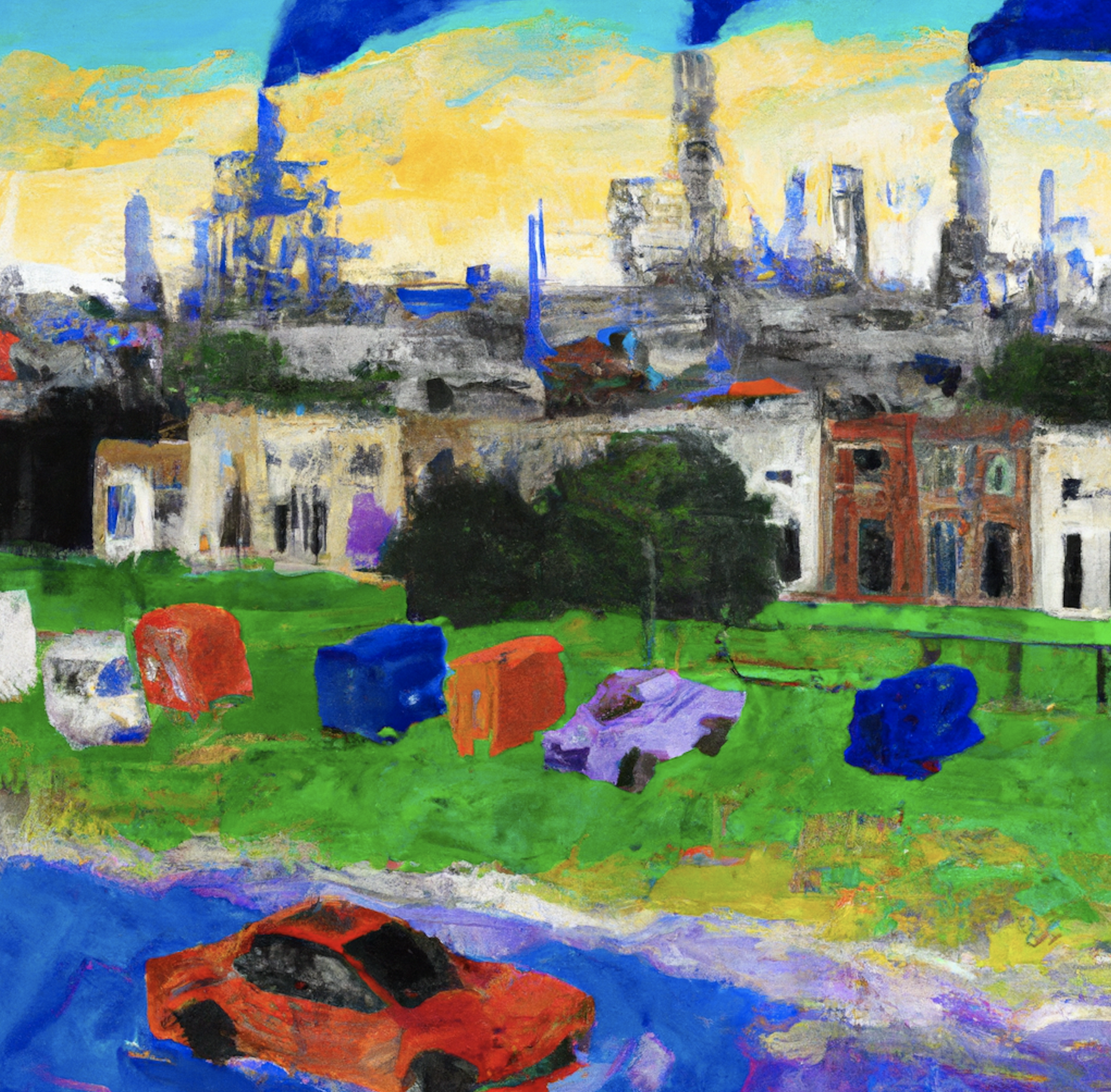by Adrian Atkinson
Despite it’s devastating impact on modern civilisation and especially urban settlements, the imminence of a peak oil crisis at least presented a challenge to the idea that we can continue along our present path of increasing reliance on the availability of oil. Is there a new “glut” of oil? And what would this mean for the planet and our survival?
On the 2nd July, the Guardian published an article by George Monbiot, arguably, as their environmental reporter, the most-read and for many of what we might call the open-minded public, believed, commentator on Peak Oil and Global Warming, under the title “We were wrong on Peak Oil. There’s enough to fry us all”. This apparent about-face came in a wake of the present glut in oil with downward trending prices and, importantly, a report by Leonardo Maugeri, fellow in the Geopolitics of Energy Project at the Harvard University Belfer Center for Science and International Affairs asserting that, far from Peak Oil, we are about to witness a new Revolution in oil production ([2. In fact Richard Heinberg, sometime guru of the Peak Oil fraternity published on the same day an article through his organisation, the Post Carbon Institute, that starts from the same report and has various interesting arguments. Meanwhile, see: Hughes, J.N. (2009) Will Natural Gas Fuel America in the 21xt Century? Post Carbon Institute, Santa Rosa, California.]).
The first thing that needs to be said is that Maugeri is one of a cluster of ‘oil cornucopians’ who have continually argued against the idea of an imminent decline in oil production. Whilst Robert Hirsch, well known Peak Oil whistle-blower within the US Government Energy institutions, was able to present an impressive list of petroleum establishment personalities who had at some stage made pronouncements on a downturn in production sometime between the present and 2020 ([3. Hirsch, RL. (2005) The Inevitable Peaking of World Oil Production. Bulletin of the Atlantic Council of the United States, 16(3).]), there are, nevertheless, serious analysts who are able to present evidence questioning this.
The fact is that Peak Oil is not a simple matter of the peaking of a finite and known amount of oil in the ground. There are very many factors that enter the equation as to when the global flow of oil (and thereafter all fossil fuels) will go into terminal decline. The neat bell-shaped curve (see above for a messier one) that has been the talisman of those believing that oil decline is imminent was, indeed, severely disrupted as a consequence of OPEC intervention in oil prices in the 1970s, indicating that politics and prices (and we should add here, also technological breakthroughs) can play havoc with the curve. Of course this does nothing to the fact that ultimately fossil fuel production will decline and cease.
The simplest fact that seems to be questioning the idea that we have arrived at the peak of global oil production is that world oil production has remained more or less at a plateau for the past seven years, with neither an upward nor downward trend. The global economic downturn has had something to do with this and also the fact of a relatively high price of oil has in turn dampened the economy. However, a new perspective on these issues seems to be emerging.
The Peak Oil discourse never really looked very seriously at what are known as ‘unconventional’ sources of oil. The most famous of various versions of the bell-shaped Peak Oil curve rarely incorporated anything beyond the likely course of the exploitation of ‘conventional’ oil sources. So-called unconventional concerns resources trapped in rock formations rather than in easily accessible reservoirs. Various ways have been tried to extract the oil, by mining and heating and washing the oil out or by various complex techniques of treating the rock underground to yield up the oil. Unconventional oils are actually found in a multiplicity of different geological situations but are generally categorised as ‘tar sands’ or ‘oil sands’, from which these days is produced around four percent of the worlds petroleum, and ‘oil shale’ that until very recently yielded practically nothing. In fact the amounts of oil in these conditions is immense: Canada’s famous tar sand beds (pictured top; also see the short documentary below, for more information about the catastrophic environmental dimensions of the tar sands), so far the only area significant exploited, contain accessible (in principle) something like a third as much as the total known world oil reserves ([4. And an even greater proportion if, as many experts believe, the reserves of many countries are being exaggerated.]) and elsewhere truly vast quantities have been identified. Shale oil is also found in many parts of the world amounting to at least the same again as the total global endowment of conventional oil and with the largest deposits found in the United States.
Discounting these in the Peak Oil discourse hitherto had two main justifications. On the one hand the technologies that have so far been experimented with to extract oil from these – going back into the mid 19th Century – have yet to show themselves viable on a large scale ([5. Estonia, however, obtains almost two thirds of its petroleum from locally processed shale oil.]). The quip was: “Shale oil is the fuel of the future – and always will be.” At bottom, the production of unconventional oil must clearly use less energy to extract, process and deliver energy to where it is required than the amount of energy actually delivered (known as the EROEI). Then to be opened up on a larger scale these must be able to deliver oil at a price that is competitive with other sources. It should be emphasised that it is highly improbable that more than a tiny fraction of these resources will ever be accessible at anything much over an EROEI of one-to-one – ie with a net gain in energy – and major technical breakthroughs will be necessary to change this in any significant way.
The higher price of oil over the last four years has triggered greater interest in investing in ways that will unlock unconventional sources. Hirsch, in his original analysis of the imminence of peak oil advocated crash programmes to open up the sources ([6. Hirsch, R. L., Bezdek, R. and Wendling, R. (2005) Peaking of World Oil Production: Impacts, Mitigation and Risk Management. Washington, DC: US Department of Energy]), but estimated, as was later implied in the International Energy Agency 2008 World Energy Outlook, that the opening up of these sources will be relatively slow and may well be overtaken by the rapidity of decline in conventional sources by about 2015 ([7. The IEA graph referred to was presented in my article in this journal Cities After Oil (One More Time) 13(4), December 2009, page 497; the same graph was subsequently re-released by the IEA clarifying the distinction between known reserves and yet-to-be-discovered resources.]). This seemed to be the point at which the overall peak in oil as a consequence of resource limits (as opposed to economic reasons as in the 1970s) was seen as potentially occurring. Of greatest importance here is that even by 2030, the 2008 report of the IEA saw no more than ten percent of world oil supplies coming from unconventional sources.
Two questions arise in response to George Monbiot’s outburst concerning the present situation, namely: have substantial new reserves been found that will fill the gap seen by the IEA as opening up in the next few years? And: are massive investments being made in unconventional oil sources that will change the 2008 estimate? Actually there is too little evidence to say that we can see clearly either that oil shortages will manifest themselves in the near future or that the peak has been avoided.
What is, however, new, is the rapid increase in the production of shale gas in the United States that has turned around what was a rapid decline in indigenous gas supply into what is looking like a massive increase in future gas supplies. Shale gas is, like shale oil, a resource trapped in rocks that can be accessed by inserting often very long, curving tubes into the rock formations and then shattering the rock and collecting, for a a relatively short while gas that is released by this action. Small-scale exploitation of shale gas has a longer history but since the late 1990s, more sophisticated technologies have allowed a relatively rapid expansion of exploitation. One consideration of how this could affect the problems emanating from the rise in the oil price as a result of the coming shortages would be a rapid conversion programme of US vehicles from petroleum to gas. This is not yet in sight, though a few countries already have significant such programmes that prove the feasibility, and such a programme could relieve pressure on the decline in petroleum resources but would nevertheless be unlikely to present some kind of ‘new horizon’ on Peak Oil ([8. See: Hughes (2011) op cite.]).
There are further arguments that show that this way or that, the future of energy from oil (and fossil fuels generally) is not, in the conventional sense, bright. The first thing concerns the issue of EROEI. Essentially the EROEI trend in fossil fuel exploitation has, from at least the mid 20th century, been downwards. That is to say that as resources become more inaccessible, so it takes greater amounts of energy to extract, process and deliver these. This means that even if energy production stays the same, the amount available to do work is tending to decline. So a plateau in production hides an actual decline in useful energy – unless there are technological breakthroughs which, of course, may relieve for some time, even for decades, the eventual decline in fossil fuel resources.
The second point is that the negative environmental impacts of exploiting ever more difficult to access fossil fuel resources are escalating. This was well illustrated by the BP Deepwater Horizon disaster in the Mexican Gulf last year where sophisticated manoeuvres to obtain difficult to access oil resources can be seen also to be more precarious in terms of possible negative environmental impacts. The mining of Canadian tar sands is creating a lunar landscape over thousands of square miles where whole ecosystems, including migrating bird routes are being wiped out and water resources rendered unusable by either man or beast. Meanwhile, arguments are currently raging over what some see as substantial negative impacts of accessing shale gas (a technique known as ‘fracking’ – which causes wide-reaching pollution to ground water. See this briefing by Friends of the Earth, “Shale gas: energy solution or fracking hell?” for more information).
And the most depressing issue is the complete lack of significant consideration of what all this means from the point of view of increasing greenhouse gas emissions. These include both the impact of methane leakage – a far more potent greenhouse gas than carbon dioxide – as well as substantial emissions in the process of obtaining and burning fuels from unconventional sources. Of course the lower the EROEI, the higher the emissions of greenhouse gasses per unit of fuel used. Looking slightly sideways at what is, meanwhile, a rapid increase in the mining and use of coal for electricity production (frantic increases in both China and the US) yields further horrors. Thus, as global warming disappears, like the Cheshire cat, from the political agenda, we see – empirically evident – the continued escalation of carbon dioxide in the atmosphere that all the above policies and initiatives will continue to exacerbate with consequences for the future of the biosphere, later in this century, that are truly macabre when seen in the light of the degree to which these are being ignored.
Indeed, all life on the planet is under severe threat if global temperatures rise by more than the internationally agreed (but ignored) ceiling of 2 degrees Celcius. Scientists have forecast the possible impacts of going over that, up to 6 degrees: “[i]t would cause a mass extinction of almost all life and probably reduce humanity to a few struggling groups of embattled survivors clinging to life near the poles.” (Reported by The Independent, November 18, 2009).([8. See Hansen, James. (2009) Storms of my Grandchildren. Bloomsbury Press, NY – perhaps the best text on the consequences of runaway climate change from the ex-advisor to George W. Bush, who was dismissed because Bush didn’t want to know about it…])
And economically and socially, what will we see? There can be little doubt that pressure to increase fossil fuel supply will continue but with regularly erupting crises, tearing into the global and local economies with, in the longer run, the consequences of climate change precipitating further dimensions of crisis. Life will in all likelihood deteriorate for majorities not just in the South (in fact maybe less so insofar as there is less fossil fuel dependence) but in the North and particularly North America. For the population of the United States – and increasingly in Europe and even Asia – the scenario set out in the 2005 video The End of Suburbia is by no means behind us: the price of automobile dependence and, indeed, the price of everything that depends on fossil fuel – ie everything that surrounds us and upon which our lives depend – will escalate, translating into collapsing economies and rising joblessness and hence probably an accelerating impoverishment of majorities and levels of deprivation that could see malnutrition spreading even in the global North. In the context of the current socio-political system, the ratchet will work in ways that allow small minorities to escape from this sea of problems and the issue will be increasingly whether the 99 percent will simply allow these economic elites to enjoy their freedoms at their expense.
The change will come only if and when the haze attending the postmodern consumerism and the bread and circuses that has characterised recent decades comes, at last, to a conclusion, from a broad understanding of the horror of what is happening. Whilst not wishing to get into arguments about the probability or superiority of particular strategies (world, or national revolution versus re-localisation) it does seem that de facto, emergent conditions for majorities will force relocalisation as long distance commuting becomes unviable for increasing numbers and urban farming becomes a significant means to alleviate hunger as even (supermarket) food becomes inaccessible to increasing numbers.
Adrian Atkinson retired from Berlin’s Technical University in 2008 where he was Professor in development planning. Previously he was for many years staff at London University’s Development Planning Unit. However, all his professional life and still continuing, he has spent much time in consultancy with international and bilateral development agencies around the world and also time working with civil society organisations including his own NGO, New Synergies in Development, based in Geneva, where he lives. He was alerted to environmental and particularly energy issues from the 1973 oil crisis on and has since mixed work in academia with international consultancy and work with civil society organisations.
Also on this website by Adrian Atkinson on the topic of peak oil:
– Readjusting to reality: Urban and peri-urban agriculture to ease the downward passage (August 19, 2011)
– Contemplating the post-fossil fuel world (April 9, 2011)
– Cities after oil: what future is this, fast approaching? (February 13, 2011)
…and in CITY, the journal:
– Atkinson, A. (2007) “Cities after oil-1. “‘Sustainable Development’ and energy futures” CITY 11 (2) : pages 201–213;
– Atkinson, A. (2007) “Cities after oil-2. Background to the collapse of ‘modern’ civilisation” CITY 11 (3) : pages 293-312;
– Atkinson, A (2008) “Cities after oil-3. Collapse and the fate of cities” CITY 12 (1) : pages 79-106;
– Atkinson, A (2009) “Cities after oil – one more time” CITY 13 (4) : pages 493-498





